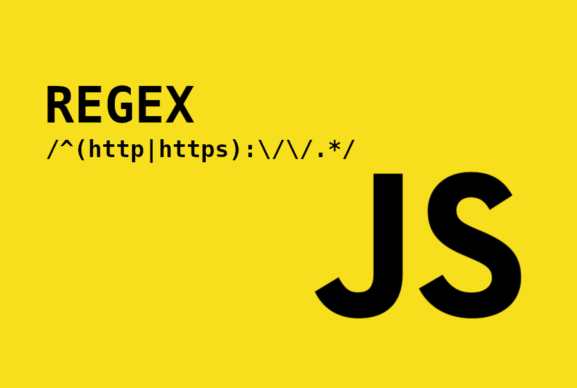Unveiling the World of Web Development: Exploring the Basics and Beyond
Web development refers to the process of building and maintaining websites and web applications. It involves a combination of programming, design, and content creation to deliver a seamless user experience on the internet.
In today’s digital age, web development plays a crucial role in various industries, from e-commerce and entertainment to education and information sharing. Understanding the fundamentals of web development is essential for anyone looking to create an online presence or pursue a career in the field.
Web development also incorporates other important aspects, such as responsive design, accessibility, search engine optimization (SEO), and security. These elements ensure that websites are user-friendly, easily discoverable, and protected against potential threats.
Web Development vs. Web Design
Web Development and Web Design are two distinct but closely related disciplines that contribute to the creation and functionality of websites. While they share some overlapping skills and goals, they involve different aspects of the website creation process.
Web Development: Web development refers to the technical implementation and programming required to build the functional aspects of a website or web application. It involves writing code, developing server-side and client-side logic, and integrating various technologies to create interactive and dynamic websites.
Key aspects of web development include:
- Front-end Development: This involves coding the user interface (UI) of a website using HTML, CSS, and JavaScript. It focuses on creating visually appealing, responsive, and interactive web pages that users can interact with.
- Back-end Development: This involves working on the server-side of the website, handling data storage, retrieval, and processing. Back-end developers use programming languages like Python, PHP, Ruby, or JavaScript (Node.js) to build the server logic and interact with databases.
- Database Management: Web development often involves designing and managing databases to store and retrieve website data efficiently. This includes setting up database structures, writing queries, and ensuring data integrity.
Web Design: Web design, on the other hand, is primarily concerned with the visual and aesthetic aspects of a website. It focuses on creating an engaging and user-friendly interface that effectively communicates the website’s purpose and brand identity.
Key aspects of web design include:
- Visual Design: This involves creating the overall look and feel of the website, including color schemes, typography, and graphical elements. Web designers utilize tools like graphic design software and prototyping tools to create visually appealing layouts and designs.
- User Experience (UX) Design: UX design focuses on enhancing the usability and overall experience of website visitors. It involves considering factors like user flow, navigation, and accessibility to ensure that users can easily find information and accomplish their goals on the website.
- Wireframing and Prototyping: Web designers often create wireframes and prototypes to visualize and test different design concepts before the development phase. This allows for feedback and iteration to refine the design and improve user interaction.
In summary, web development primarily deals with the technical implementation and functionality of websites, while web design focuses on creating visually appealing and user-friendly interfaces. Both disciplines work together to create effective and successful websites, with developers focusing on the coding and functionality, and designers ensuring an engaging and intuitive user experience.
Why is web development important?
Web development plays a crucial role in today’s digital age for several reasons:
- Online Presence: A well-developed website serves as an essential platform for individuals, businesses, organizations, and institutions to establish their online presence. It acts as a virtual storefront or information hub that can be accessed by a global audience 24/7. A professional and functional website enhances credibility, builds trust, and expands reach.
- Business Growth: For businesses, web development is a key factor in driving growth and success. A website can serve as a powerful marketing tool, showcasing products or services, attracting potential customers, and generating leads. It enables businesses to engage with their target audience, establish brand identity, and increase sales and revenue.
- Accessibility and Convenience: The internet has become an integral part of our lives, and web development ensures that information, services, and resources are easily accessible to users. Websites provide a convenient and efficient way to find information, make purchases, interact with companies, and access various services from anywhere in the world.
- Communication and Interaction: Web development enables effective communication and interaction between businesses, organizations, and their target audience. Websites often include features like contact forms, chatbots, and social media integration, allowing users to connect, provide feedback, and seek support. This fosters customer engagement, improves customer service, and builds long-lasting relationships.
- E-commerce and Online Transactions: The rise of e-commerce has transformed the way we shop and conduct business. Web development facilitates the creation of secure and user-friendly online stores, enabling businesses to sell products and services globally. It provides features like shopping carts, payment gateways, and order management systems, making transactions seamless and convenient.
- Automation and Efficiency: Web development allows for the automation of various processes, saving time and effort. With the use of web applications and back-end systems, businesses can streamline tasks such as inventory management, customer relationship management (CRM), and content management. This improves operational efficiency, reduces human errors, and enhances productivity.
- Collaboration and Innovation: Web development fosters collaboration and innovation within the development community. Open-source frameworks, libraries, and online communities provide developers with resources, knowledge sharing, and opportunities to collaborate on projects. This leads to the continuous improvement of web technologies, driving innovation and pushing the boundaries of what is possible on the web.
Most Common Web Development Programming Languages
Web development encompasses a wide range of programming languages, each with its own set of strengths and use cases. Here are some of the most common programming languages used in web development:
- JavaScript: JavaScript is the primary language for web development, as it runs natively in web browsers. It enables interactive and dynamic functionality on the client-side and is also used on the server-side (with Node.js). JavaScript frameworks like React, Angular, and Vue.js are popular for building robust front-end applications.
- HTML (Hypertext Markup Language): HTML is the backbone of web development. It is used to structure the content and define the layout of web pages. HTML5 introduced new features and improved multimedia support, making it more powerful for building modern websites.
- CSS (Cascading Style Sheets): CSS is used alongside HTML to control the presentation and styling of web pages. It allows for the customization of fonts, colors, layouts, and animations, enhancing the visual appeal and user experience of websites.
- PHP: PHP (Hypertext Preprocessor) is a server-side scripting language used for dynamic web development. It is widely used for building websites with complex functionalities and interacting with databases. PHP frameworks like Laravel and Symfony provide additional tools and structures to streamline development.
- Python: Python is a versatile language used in various domains, including web development. It offers frameworks like Django and Flask, which provide robust tools and libraries for building scalable web applications with ease. Python’s simplicity and readability make it a popular choice for developers.
- Ruby: Ruby is known for its elegant syntax and productivity. It gained popularity with the Ruby on Rails framework, which enables rapid development of web applications. Ruby on Rails emphasizes convention over configuration and follows the MVC (Model-View-Controller) pattern.
- Java: Java is a widely used general-purpose programming language that is popular for building enterprise-level web applications. It provides scalability, security, and cross-platform compatibility. Java frameworks like Spring and JavaServer Faces (JSF) are commonly used for web development.
- C#: C# (pronounced C sharp) is a powerful and versatile language developed by Microsoft. It is commonly used for web development using the ASP.NET framework. C# is particularly popular for building robust and scalable web applications on the Windows platform.
Most Common Web Development Frameworks
Web development frameworks provide developers with pre-built tools, libraries, and structures to streamline the development process. Here are some of the most common web development frameworks used across different programming languages:
- React.js: React.js is a JavaScript library for building user interfaces. It focuses on creating reusable UI components and provides efficient rendering through its virtual DOM. React.js is widely used for building single-page applications (SPAs) and is often paired with other libraries or frameworks for complete web application development.
- Angular: Angular is a TypeScript-based framework developed by Google. It offers a comprehensive set of features for building large-scale web applications. Angular follows the component-based architecture and provides tools for data binding, dependency injection, routing, and more. It has a robust ecosystem and is known for its performance and scalability.
- Vue.js: Vue.js is a progressive JavaScript framework that is gaining popularity for its simplicity and flexibility. It allows developers to incrementally adopt its features and scale up as needed. Vue.js provides a reactive data-binding system and a component-based architecture, making it easy to build interactive user interfaces.
- Django: Django is a high-level Python web framework known for its “batteries included” approach. It follows the model-view-controller (MVC) pattern and offers a rich set of tools and libraries for rapid development. Django handles many common web development tasks, such as URL routing, database integration, user authentication, and more.
- Ruby on Rails: Ruby on Rails, often referred to as Rails, is a web development framework written in Ruby. It emphasizes convention over configuration and follows the model-view-controller (MVC) pattern. Rails offers a set of tools and libraries for building database-backed web applications quickly and efficiently.
- Laravel: Laravel is a PHP web development framework known for its elegant syntax and expressive features. It provides a rich set of functionalities, including database integration, routing, caching, and authentication. Laravel follows the MVC pattern and promotes clean, maintainable code.
- ASP.NET: ASP.NET is a web development framework developed by Microsoft, primarily using C#. It offers a robust set of tools for building scalable web applications. ASP.NET supports multiple frameworks, including ASP.NET Web Forms, ASP.NET MVC, and ASP.NET Core, providing flexibility to developers.
- Express.js: Express.js is a lightweight and flexible Node.js framework for building web applications and APIs. It simplifies server-side development with its minimalist design and middleware support. Express.js allows developers to create robust web applications using JavaScript on the server-side.
Types of Web Development
Web development encompasses various types and areas of specialization. Here are some of the common types of web development:
- Front-end Development: Front-end development focuses on the client-side of web development, primarily dealing with the user interface (UI) and user experience (UX). Front-end developers use HTML, CSS, and JavaScript to create visually appealing and interactive web pages. They work on designing and implementing the user interface, ensuring responsiveness across different devices, and optimizing performance.
- Back-end Development: Back-end development involves working on the server-side of web development. Back-end developers build the logic and functionality that powers the website or web application. They handle data processing, server-side scripting, database integration, and server configurations. Back-end development commonly uses languages like PHP, Python, Ruby, Java, and JavaScript (with Node.js).
- Full-stack Development: Full-stack development combines both front-end and back-end development. Full-stack developers have the skills and knowledge to work on both the client-side and server-side of web development. They can handle the entire development process, from designing the user interface to implementing the server logic and database integration.
- Mobile Web Development: Mobile web development focuses on creating web applications optimized for mobile devices. It involves building responsive web designs that adapt to different screen sizes and touch interactions. Mobile web developers often use technologies like HTML5, CSS, and JavaScript frameworks to create mobile-friendly user experiences.
- E-commerce Development: E-commerce development specializes in building online stores and enabling online transactions. E-commerce developers integrate payment gateways, shopping carts, and product management systems into websites to facilitate online selling. They ensure secure transactions, inventory management, and a smooth user experience for customers.
- Content Management System (CMS) Development: CMS development involves creating and customizing content management systems like WordPress, Drupal, Joomla, or Shopify. CMS developers build and customize themes, plugins, and modules to meet specific website requirements. They enable content creation, publishing, and management capabilities for website owners.
- Web Application Development: Web application development focuses on building feature-rich and interactive web applications. These applications often require complex functionality and user interactions, such as social media platforms, online collaboration tools, project management systems, and more. Web application developers use various frameworks, libraries, and programming languages to create scalable and robust applications.
- Progressive Web App (PWA) Development: Progressive web apps combine the best features of both web and mobile applications. PWAs are web applications that can be installed on a user’s device and offer a native-like experience. PWA developers utilize modern web technologies like service workers, push notifications, and offline capabilities to create fast, reliable, and engaging web applications.



